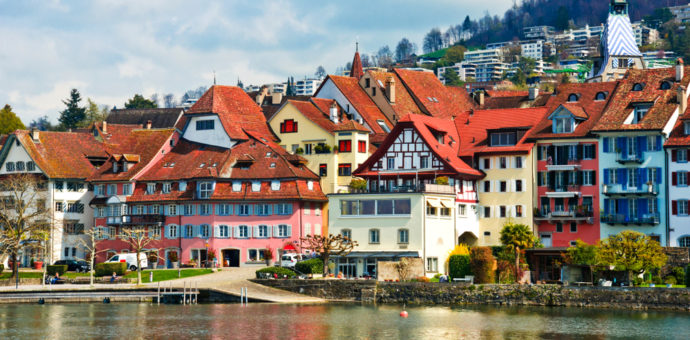Home to Crypto Valley, a hub that attracts crypto companies in Switzerland, the Canton of Zug has been attracting investors’ attention. The region seeks to attract businesses to move its economy, very restricted due to the small dimensions of the canton, with only 238.7 square kilometers. To get an idea, the city of Rio de Janeiro has 1,200 km², while the São Paulo state’s capital has 1,521 km², according to IBGE data.
The Canton of Zug recorded a Gross Domestic Product (GDP) of 18.92 billion Swiss francs in 2017 (the most recent data available, published at the end of 2019). It equates to R$ 112.85 billion. Although Zug has about one-fifth of the area of the city of Rio de Janeiro, its GDP in Reais is not so far from the R$ 364.05 billion of Rio.
In Zug, the majority of the workforce (78.7%) works in the service sector. This is the secton that encompasses crypto companies, that are the highlight of the region. In second place is the industry, with 19.7% of workers. Agriculture, in turn, employs only 1.6% of the workforce, with 1.866 people, according to 2018 data. That year, there were 18,200 businesses in operation in the Canton of Zug.
The population of the Canton of Zug is 100% urban
Zug’s population – which is 100% urban — has been growing and doubled in size in the past 40 years, the Canton’s website says. Despite this, it is still very small. At the end of 2018, there were 126,837 people. More recent data from Rio and São Paulo show that these cities had 6.32 million and 11.253 million inhabitants.
The canton’s primary language is its official language, German (according to 80.9% people’s response), with English in second place (11.3%), the Federal Statistical Office reports. The importance of English among local languages may be explained by another feature of Zug: the strong presence of foreigners. This makes up 28.3% of the population and they come from 120 different countries, as points out the Canton’s website.
Tourism goes from caves to brewery
One of the activities that move the economy in Zug is tourism. There are several options, despite the small size of the canton. There are from museums to boat trips on Lake Zug. It is also possible to explore the Höllgrotten caves, which cost 6 Swiss franc for children and 12 for adults. There are also guided tours of Zug’s old town (capital of the Canton) and a local brewery.
If you get hungry after so many activities, the Zug Tourist Board lists some of the local specialties. For example, the Arctic trout, whose fishing takes place in Lake Zug itself, and the Zuger Kirschtorte, a kind of cherry cake. According to the organization, this dessert has existed for over a hundred years.
The weather in Zug is inviting for Swiss chocolate, especially if it is a hot chocolate. The “hottest” months of the year are July and August, according to Meteoblue. However, the maximum temperature is 23°C on average. In the winter months, the minimum temperatures can be below zero. No wonder the Zug Tourist Board has a section of its website dedicated to activities for bad weather.







